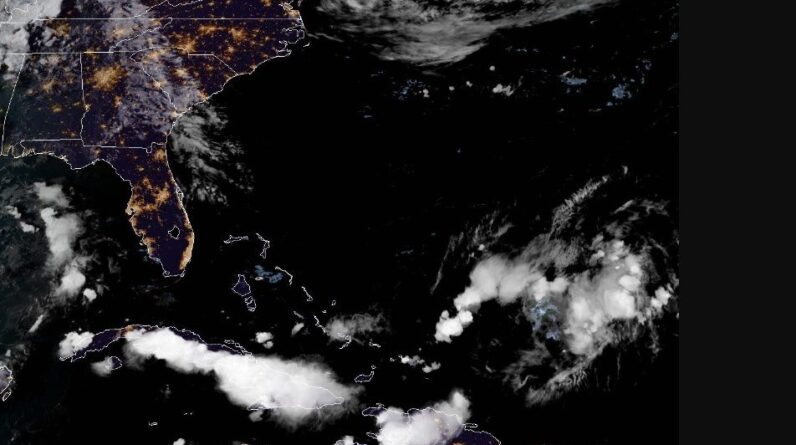
[ad_1]
To the right on this image, we see TropicaL Storm Lee, looking like a blob right now. We will follow the storm’s formation through the week. Image dated 7:35 p.m. EDT on Sept. 5, 2023
Source – NOAA GOES EAST
Tropical Storm Lee formed Tuesday in the Atlantic Ocean and was forecast to become a major hurricane as it approaches the Caribbean.
The storm, designated as Invest 95-L on Monday afternoon, is now located some 1,315 miles (2115 kilometers) east of the Lesser Antilles on Tuesday afternoon.
At the 5 p.m. AST advisory from the NHC, Tropical Storm Lee had maximum sustained winds of 45 mph (75 kph) and was moving west-northwest at 16 mph (26 kph).
Lee’s current movement is expected to continue for the next few days with a slight reduction in forward speed. Tropical Storm Lee is also forecast to rapidly intensify into an extremely dangerous Category 4 Hurricane by this weekend.
This latest storm comes just days after Hurricane Idalia left a path of destruction across the Southeast. That storm made landfall Wednesday as a Category 3 Hurricane.
More than 200,000 customers were without electricity as trees snapped by strong winds brought down power lines and water submerged streets as Idalia came ashore in Florida’s Big Bend, near Keaton Beach just before 8 a.m. EDT. with maximum sustained winds of 125 mph.

Factors that will impact strengthening
All this week, Tropical Storm Lee will be moving across an environment with low wind shear, ample moisture, and ocean temperatures several degrees above the threshold for tropical development (roughly 80 degrees Fahrenheit).
As Accuweather.com points out, as the storm moves across the Atlantic, “it will not have to contend with any dry air, which will help it to get its act together,” explained AccuWeather Tropical Meteorologist Alex DaSilva.
Additionally, the lack of vertical wind shear is optimal for strengthening and tropical formation, and that shear looks to remain low across the western and central Atlantic for at least the next seven days.
As the storm continues to get organized, AccuWeather meteorologists say that it can take on a general westward track toward the eastern Caribbean Islands.
Forecasters say that any potential impacts to the United States and Atlantic Canada will rely largely on the overall steering pattern of winds in place next week. Digital Journal will keep readers up to date with the latest advisories.
[ad_2]
Source link






